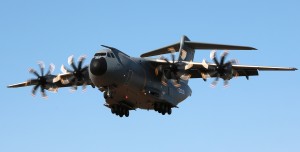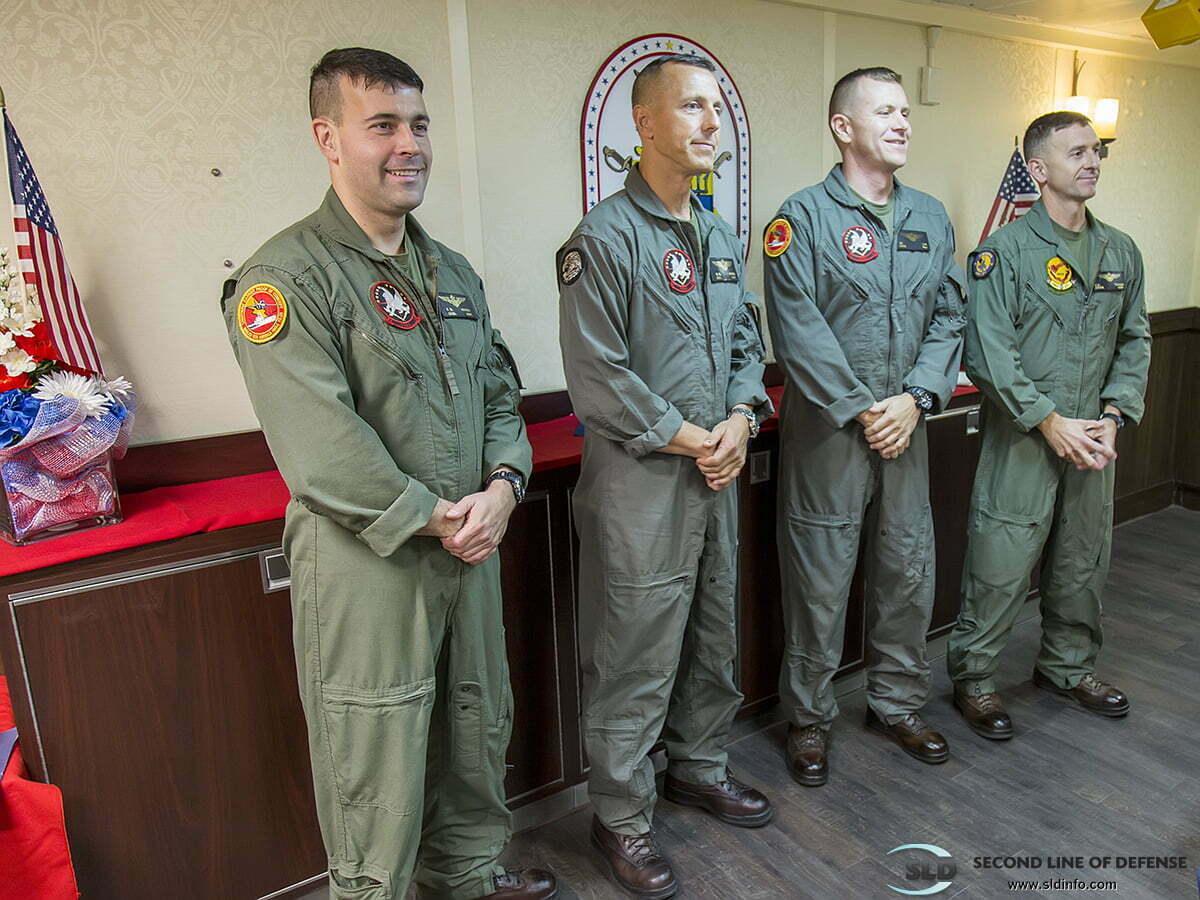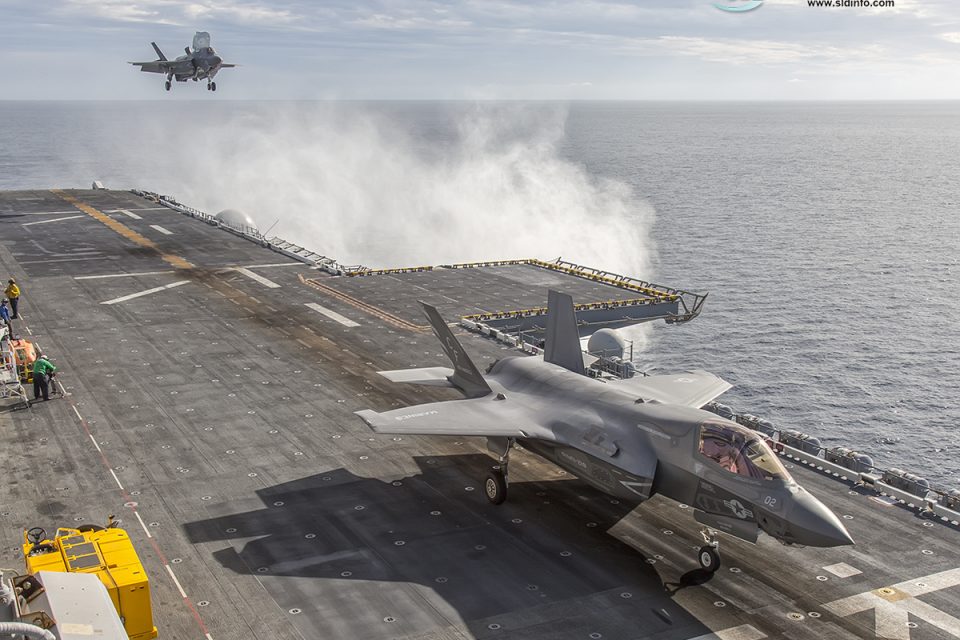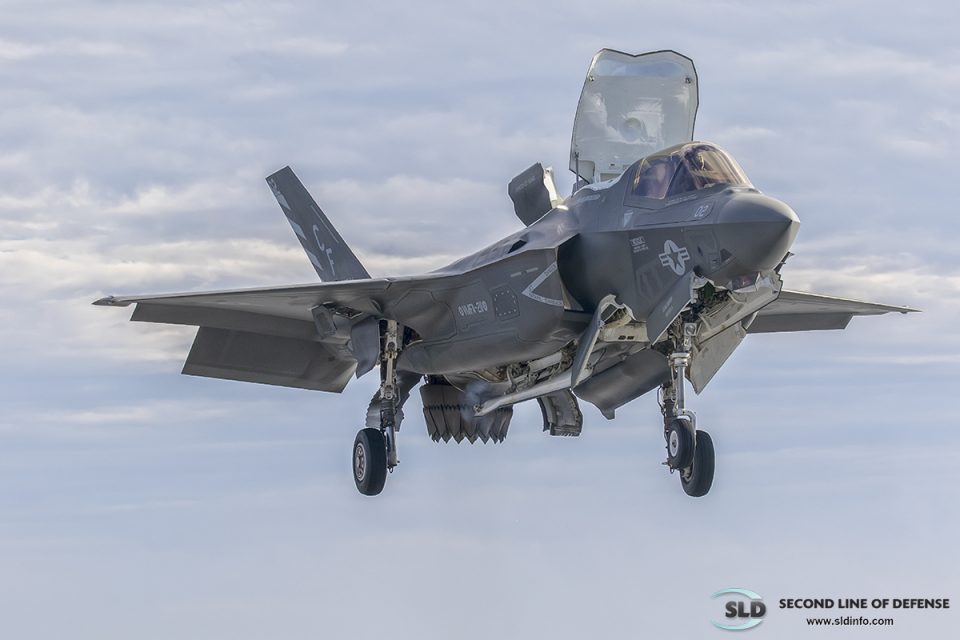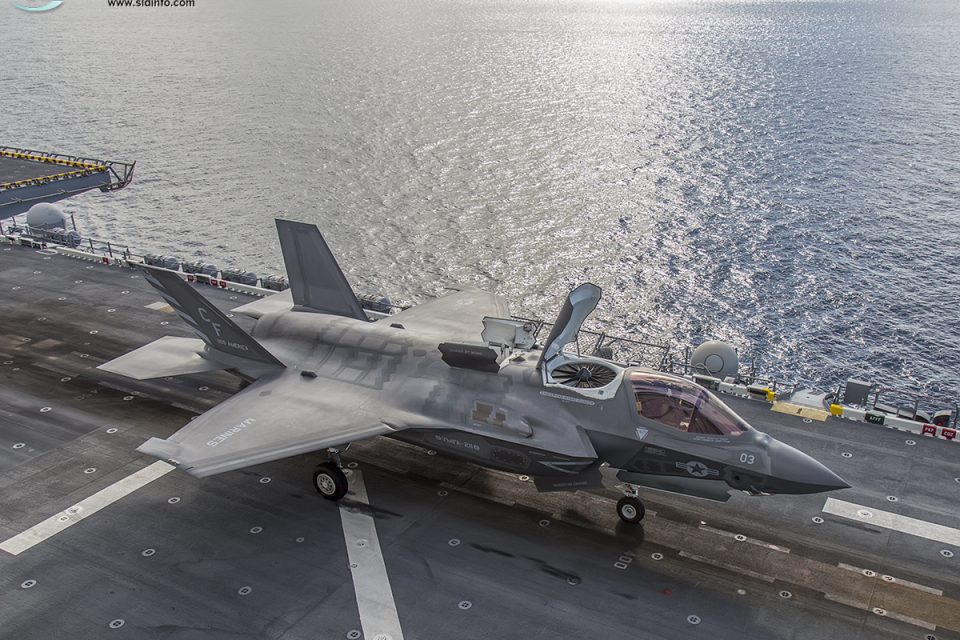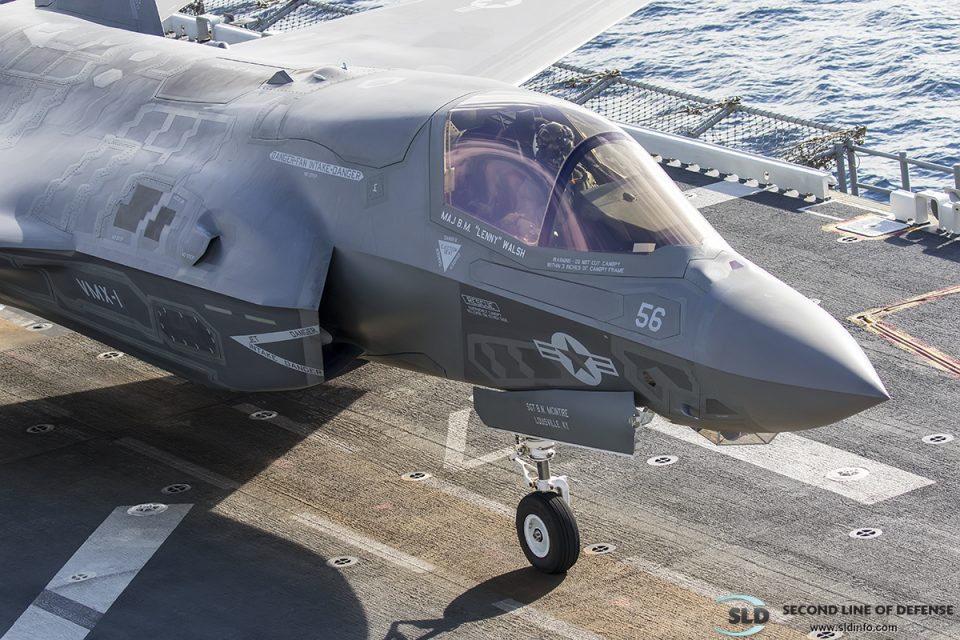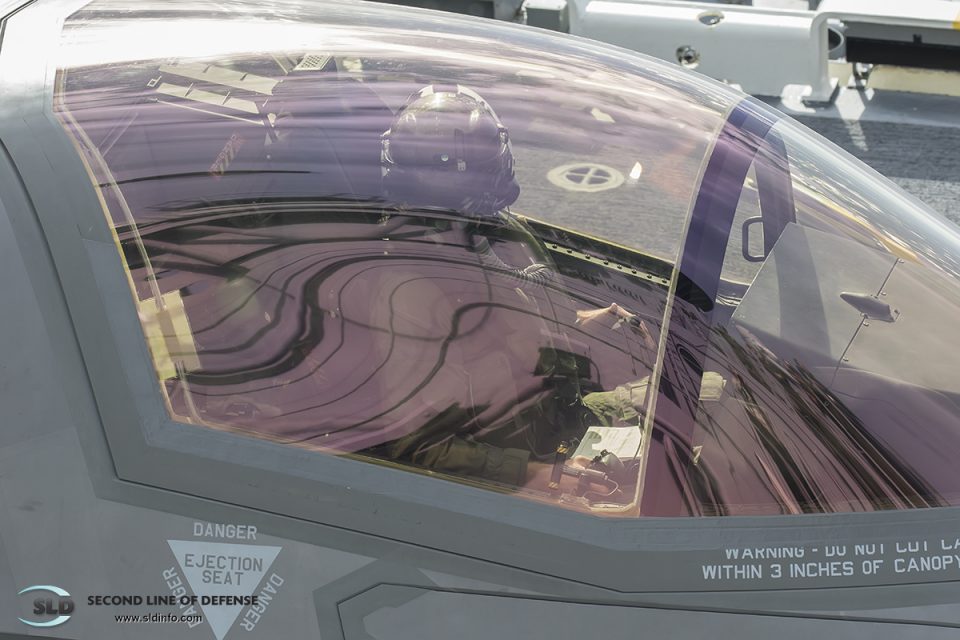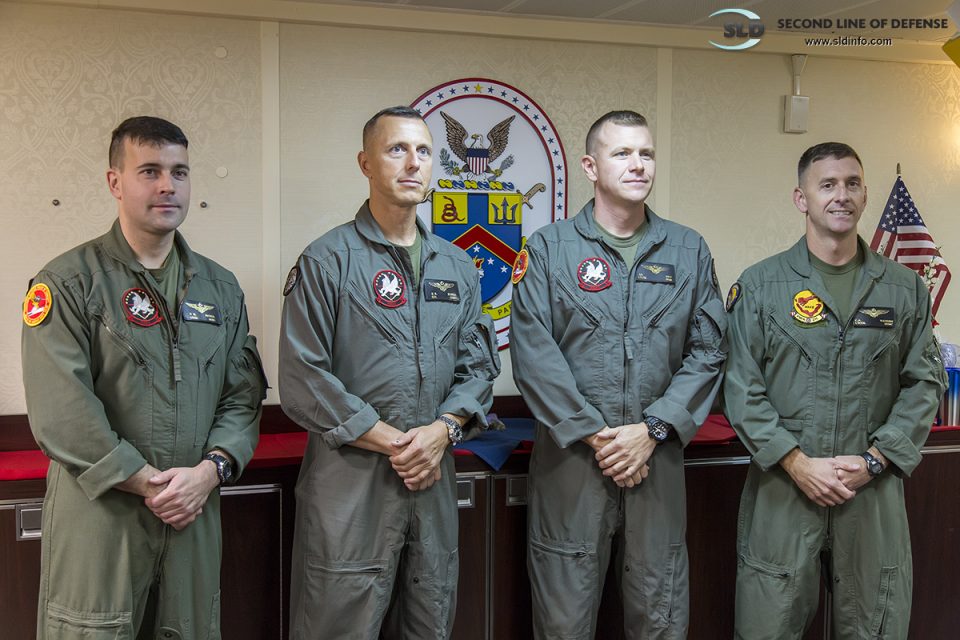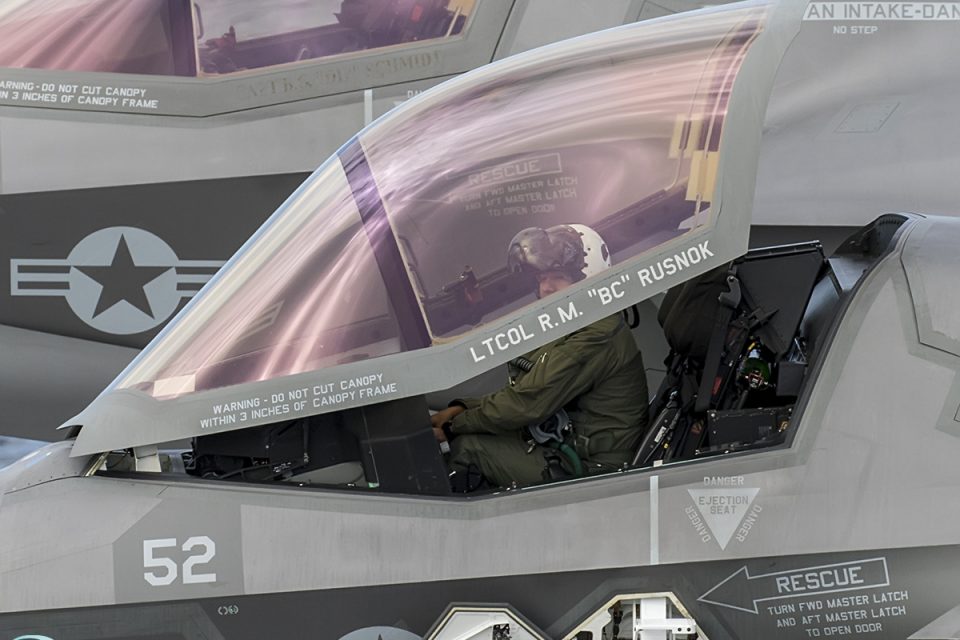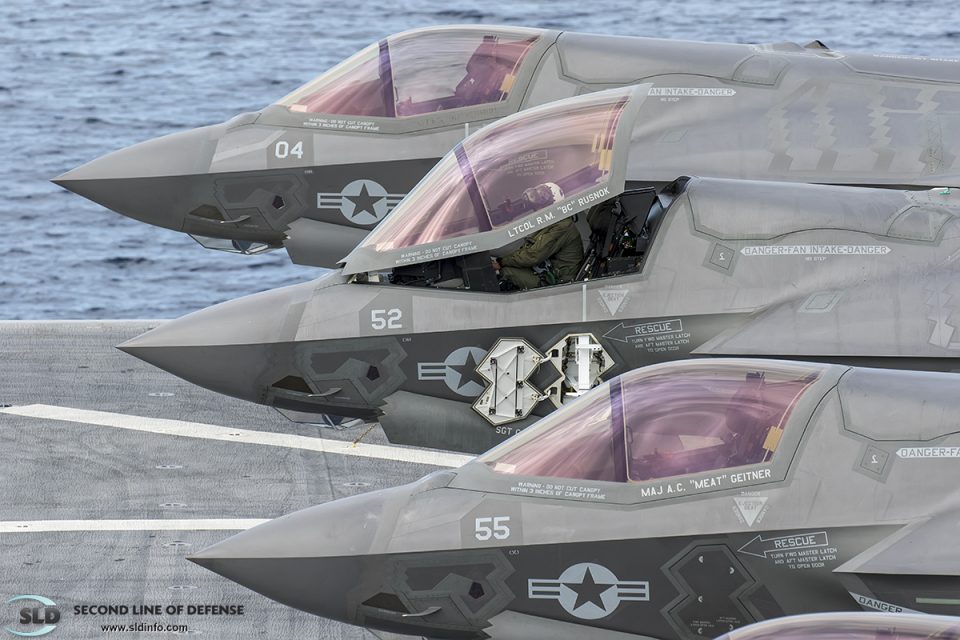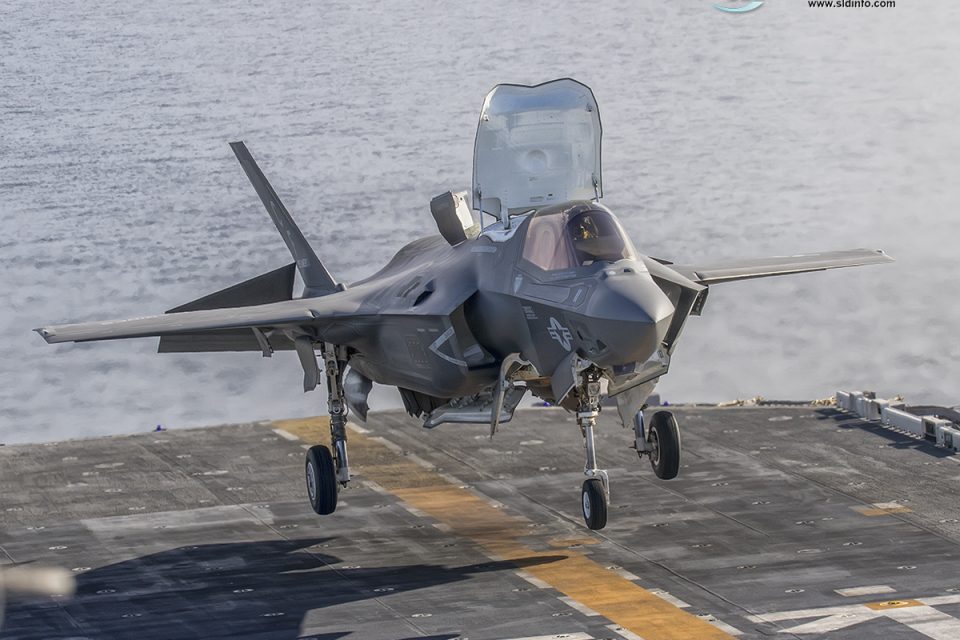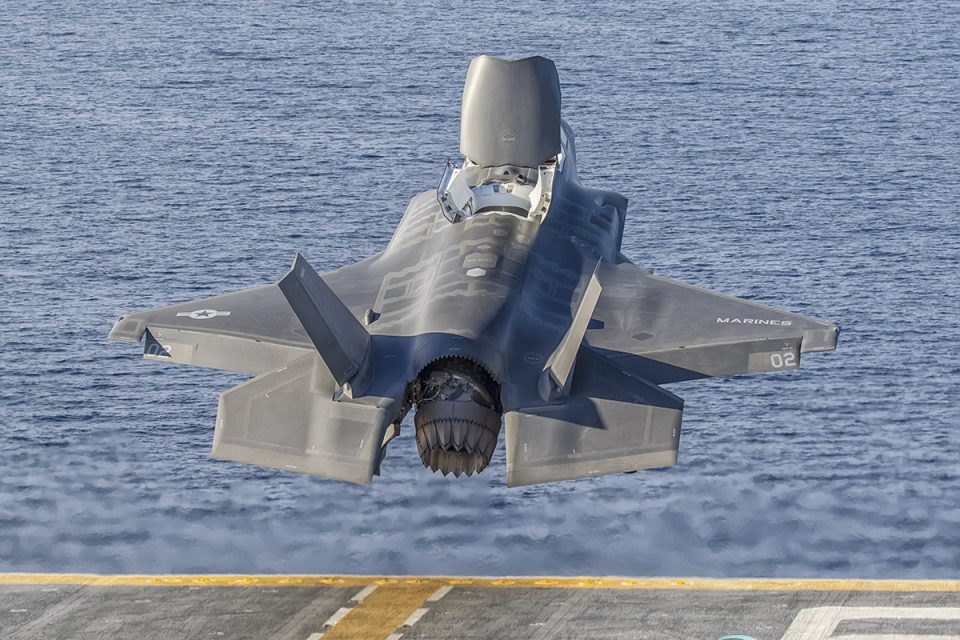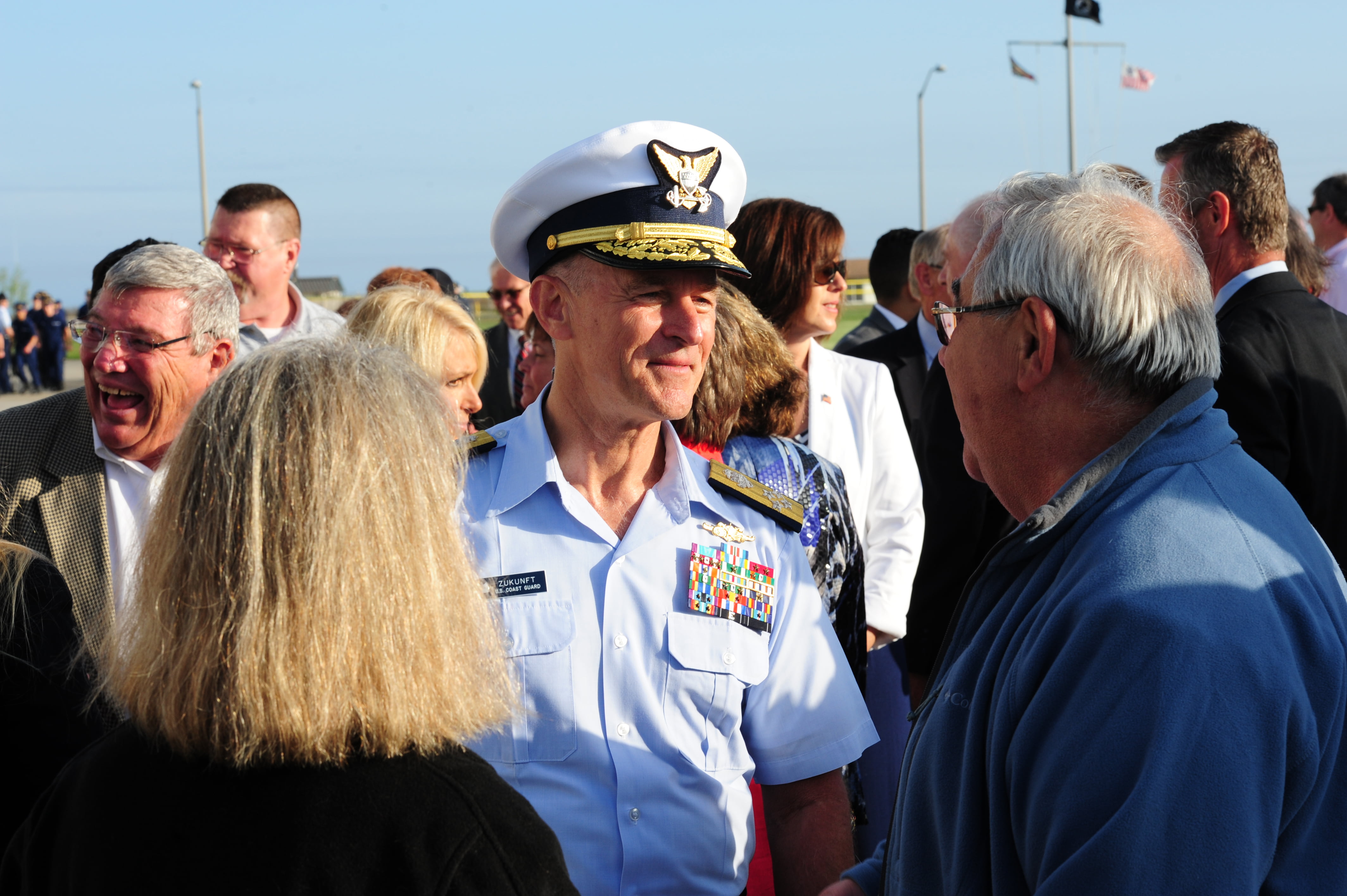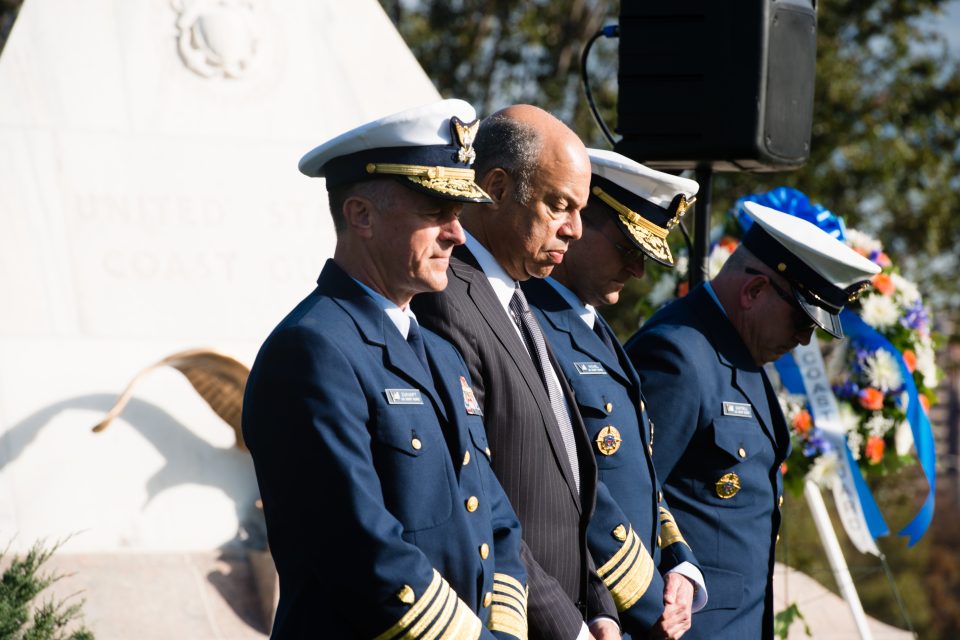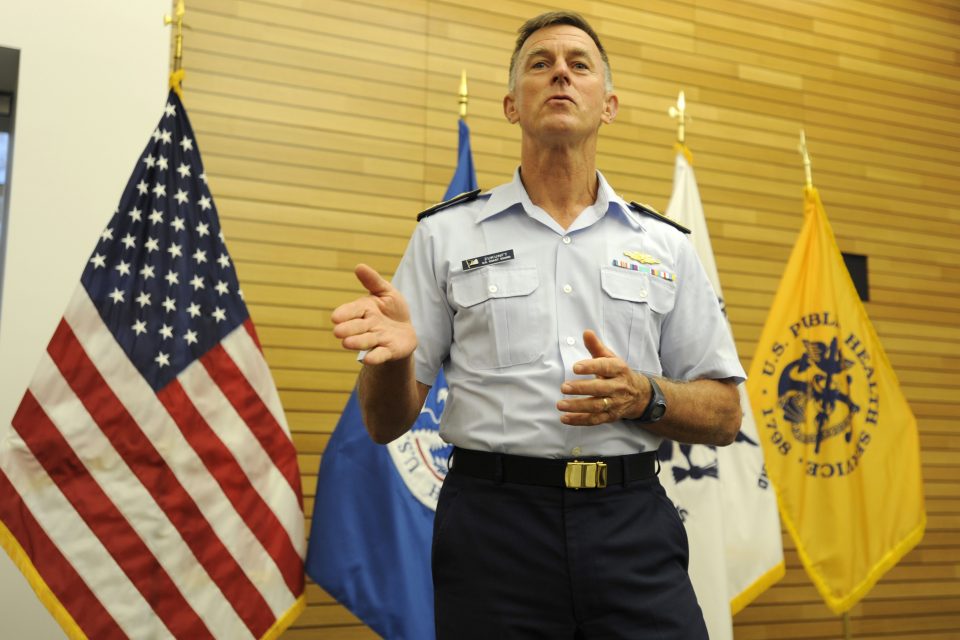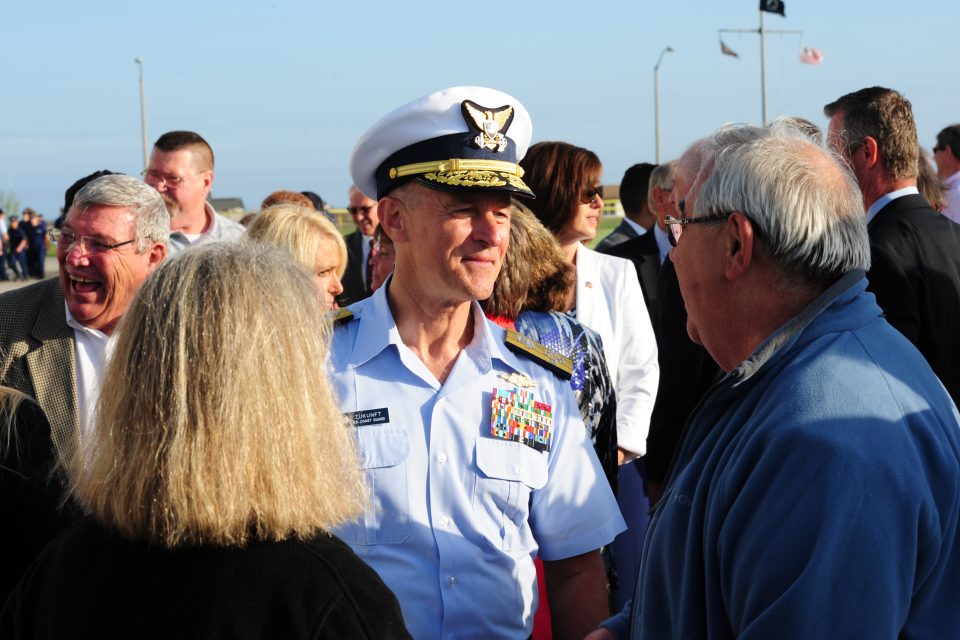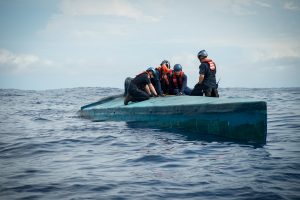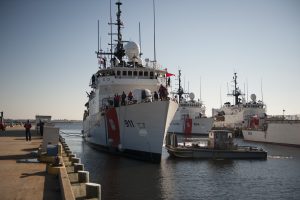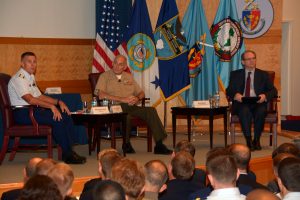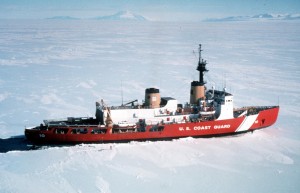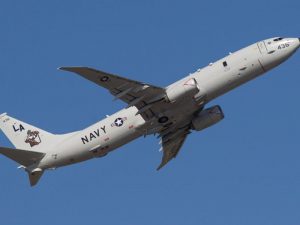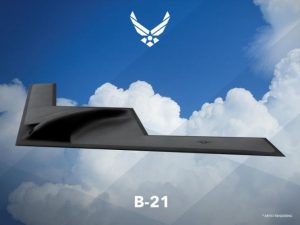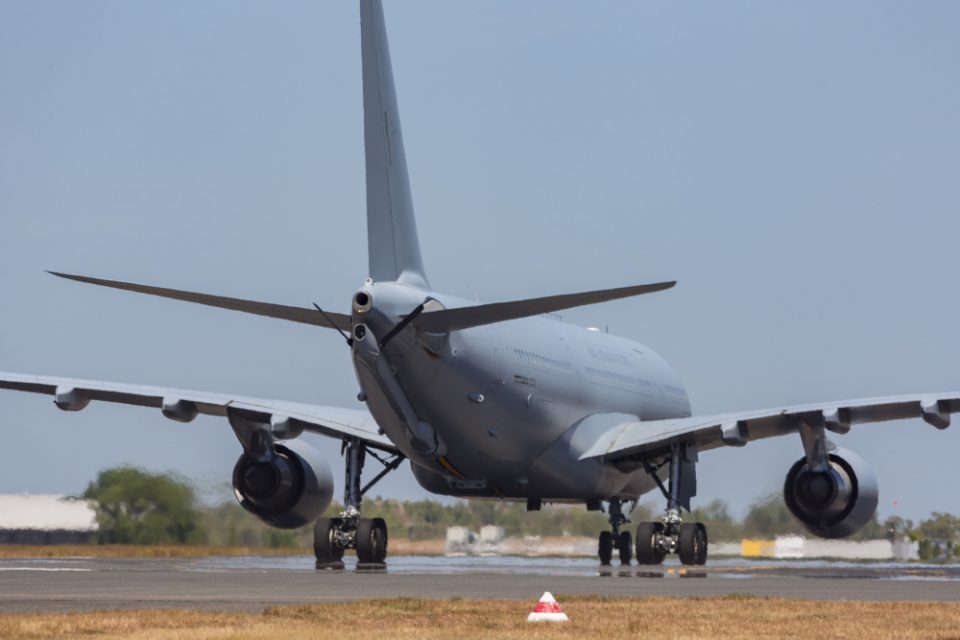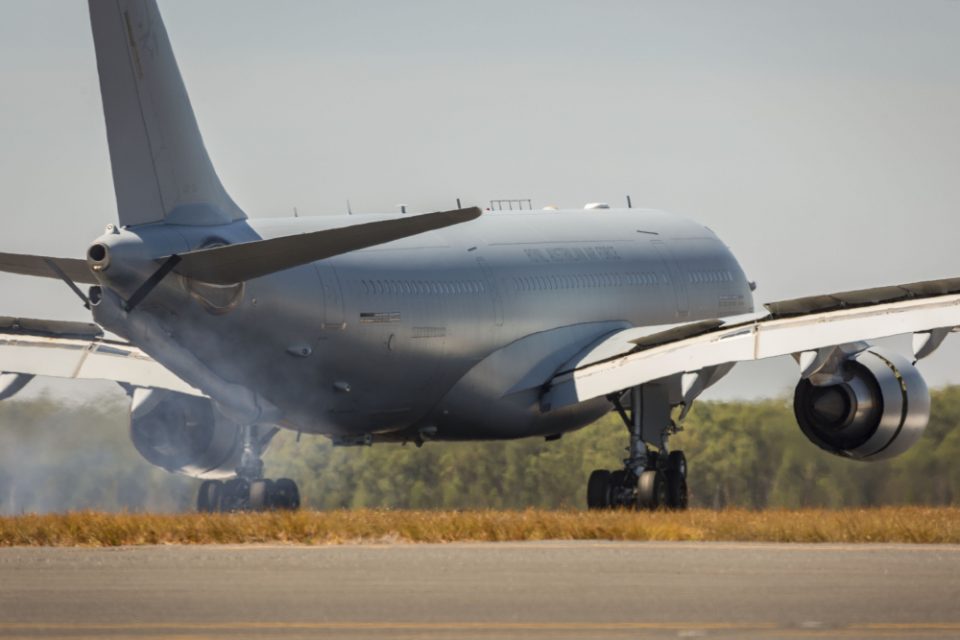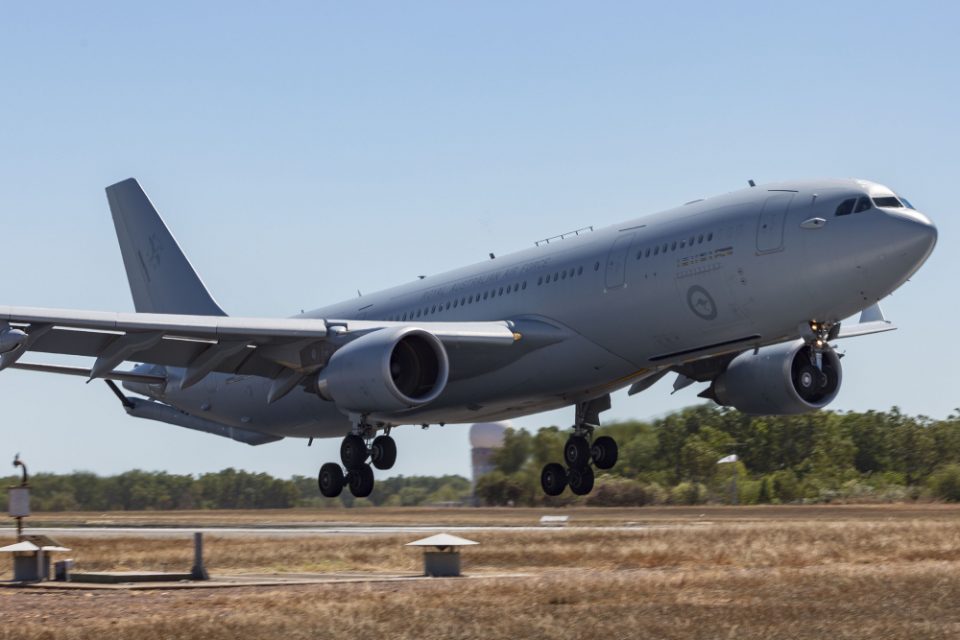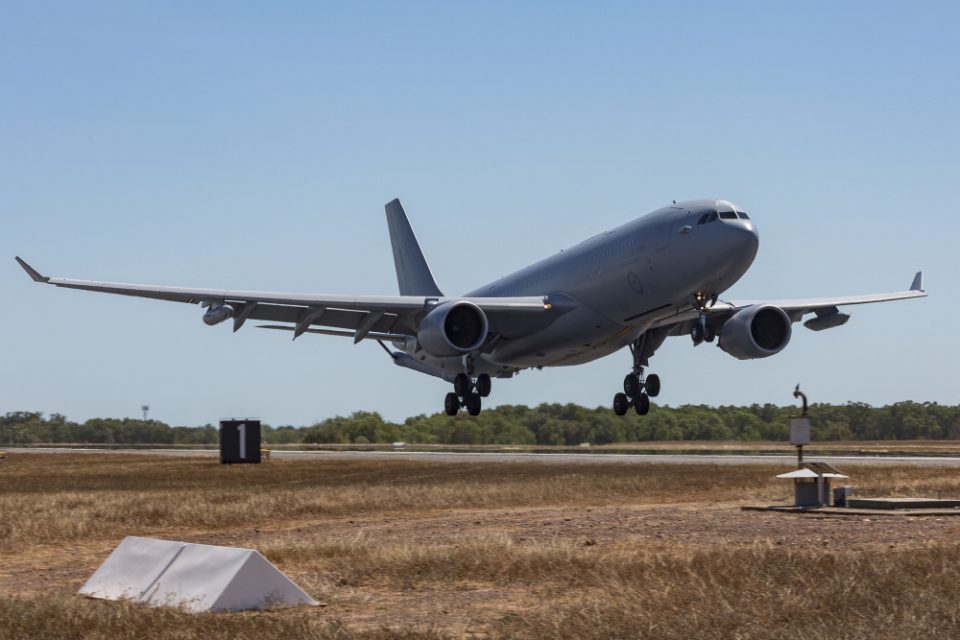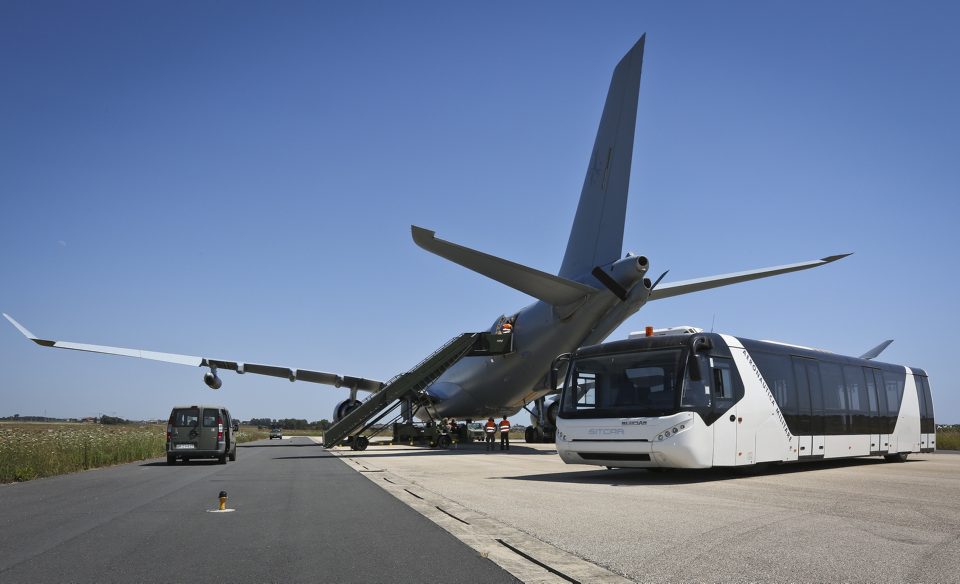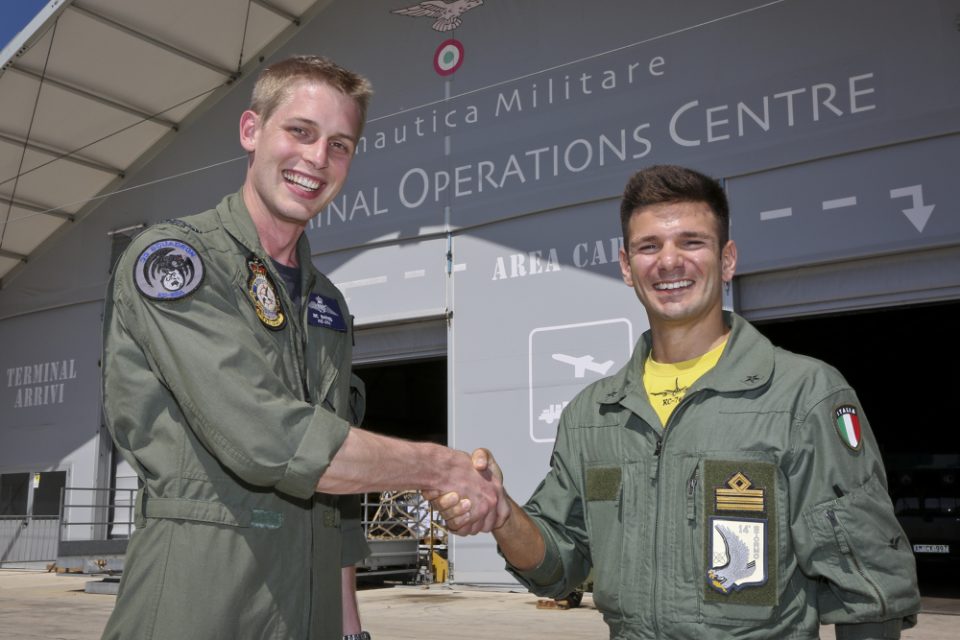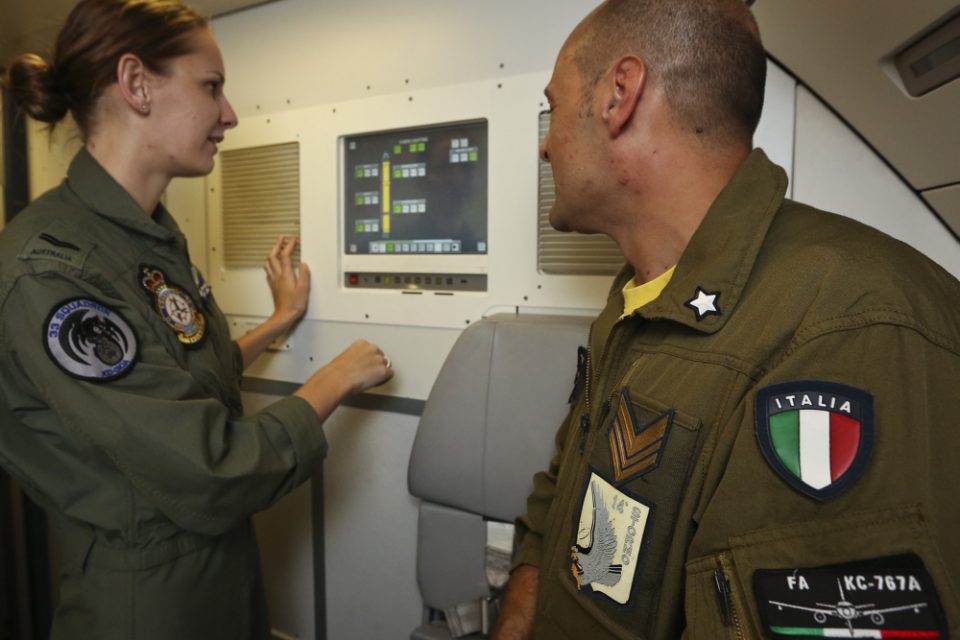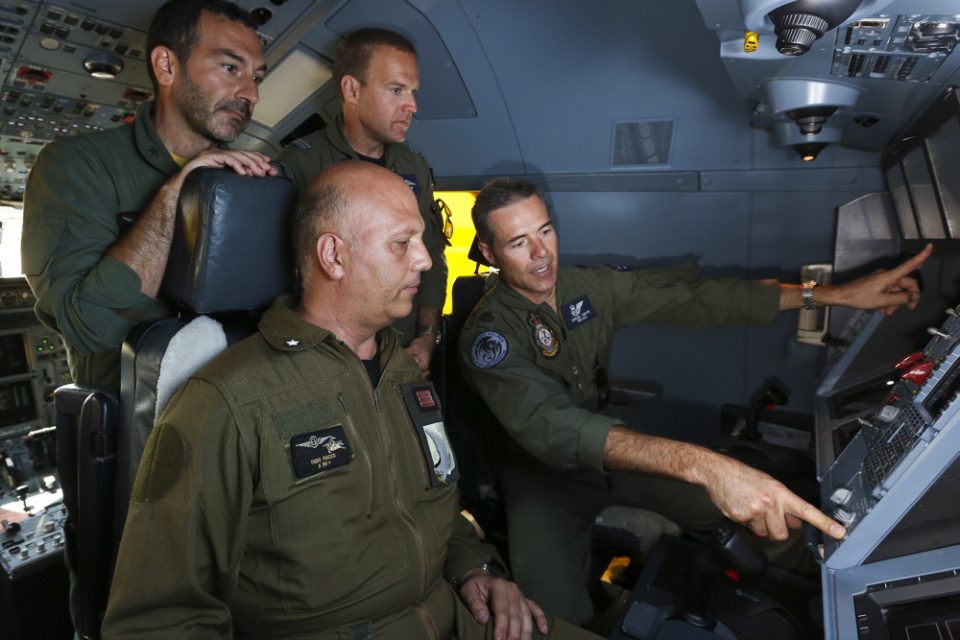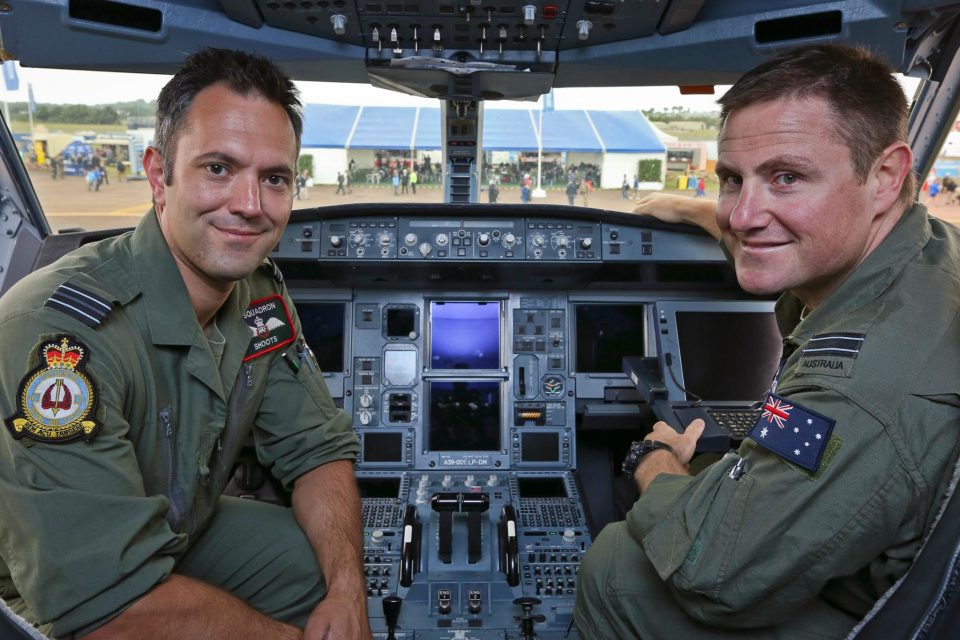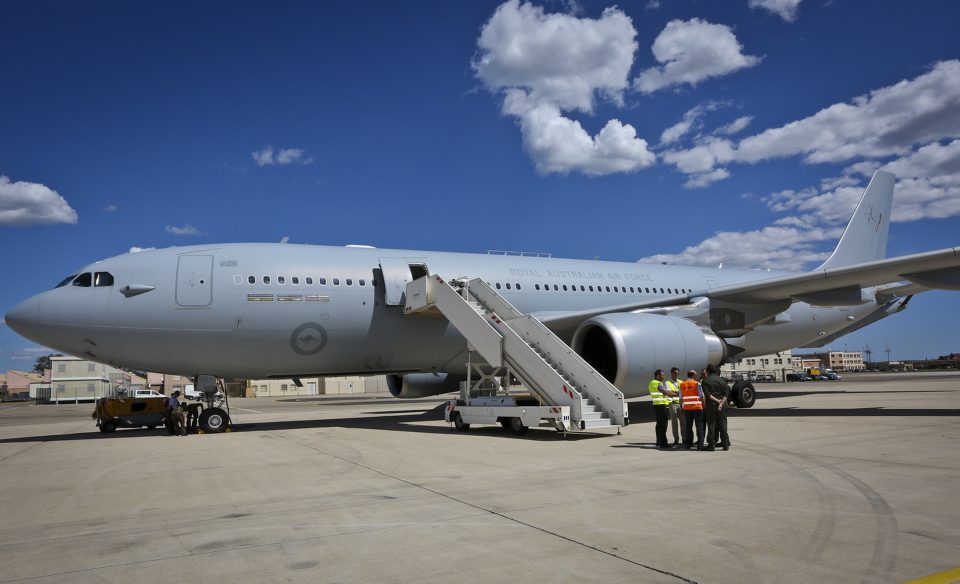2016-12-06 By Todd Miller
Statistics, Milestones, Capabilities, Flight characteristics, Test protocols, Cost, Software blocks. It is easy to get lost in the complexity of the F-35 program.
The combined F-35 fleet now has over 75,000 flight hours, yet for many there remains a lack of understanding. Much of this can be expected given many of the F-35s capabilities are classified.
This is compounded by the reality that many do not grasp the war the F-35 was designed to deter – or fight.
Aerial warfare of the 21st century is not anticipated to consist of within visual range (WVR) dogfights, but rather the prevailing aircraft will dispatch its adversary without even being detected. 21st Century Warfare is defined by new terms; “Information Dominance,” “Full Spectrum Dominance,” “Distributed Lethality,” “The Kill Cloud/Kill Web.”
This warfare has about as much in common with wars of the past as your 1970’s land line has to your smartphone.
It is in this battlespace that the F-35 is designed to fight and to do so with a distinctly unfair advantage.

To understand the significance and value of the F-35, and whether “it works” or not, cut through the complexity and noise. Simplify. Put aside the politicians, the ideologues, the self-proclaimed experts and listen to the voice of the pilots.
The pilots will take the aircraft into combat, their own lives in the balance as they penetrate contested space and are likely to be outnumbered by adversary aircraft.
Second Line of Defense and a handful of journalists recently had the opportunity to visit with four such pilots during a “Proof of Concept” demonstration on the USS America, November 19, 2016.
The four pilots are some of the most experienced F-35B pilots in the United States Marine Corps (USMC);
- George “Sack” Rowell, Commanding Officer (CO) of VMX-1 (Marine Operational Test & Evaluation Squadron). Prior to the F-35, Rowell spent appx. 3000 hours over 18 years of flying the F/A-18 Hornet. Previously the CO of VMFA(AW)-533
- Col. Chad “Mo” Vaughn, CO of VMFA-211. Prior to the F-35, Vaughn spent a couple 1000 hrs over 13 years in the F/A-18A-D Hornet, as well as time in the F-16A-B Fighting Falcon/Viper and F/A-18 Super Hornet at NAS Fallon.
- Col. Rich “BC” Rusnok, slated to become the CO of VMFA-121 in March 2017. Prior to the F-35, Price spent appx. 7 years flying the AV-8B Harrier II with additional time in the F/A-18 Hornet.
- Col. John “Guts” Price, slated CO for VFMA-122 (2018). Prior to the F-35, Price spent appx. 1200 hrs and 10 years flying the AV-8B Harrier II, and has about 400 hrs in the F-35 over the past 3 years.
The comments have been edited for readability with best efforts made to maintain context and integrity of intent.
As you look at the F-35s combat capabilities, what two things really mark it as either a superior or inferior weapon compared to what you have previously flown?
Mo: The closer you get to the airplane, the more positive you are about it.
The airplane provides awareness of what is going on around you. All around you. It is second to none.
I tell people this all the time.
I cannot tell you how awesome the sensor suite is, combined with the survivability of the airplane.
It’s not just that it is a stealth airplane, it is everything rolled into one.
It makes it unlike any other plane anywhere in the world right now.
BC: Stealth works. Low observability is not a fallacy.
You see it in the airplane and realize what a powerful capability it is.
None of the airplanes we flew prior had that capability.
To echo what Mo said, the situational awareness (SA), the fusion piece of it stands out.
In Gen 4 aircraft the pilot is the fusion engine, what’s in between your ears is what’s making that fusion happen.
To some degree that’s still true, the human is a major part of this weapons system.
However, the aid that the fusion system gives a pilot to make high level decisions, coupled with situational awareness well beyond what was had before – that’s what makes it a game changer.
Guts: Situational awareness and the freedom of maneuver that stealth brings. The workload required to have that unprecedented SA is greatly reduced over previous platforms.
I’m getting all this information, I have freedom to maneuver, and I work significantly less than I did in a previous platform to have that level of information.
That frees up my processor to be able to fight the battle vs. each individual part that I used to have to put together.
The workload is reduced in all aspects of flight, and that enables me to focus on the fight at hand.
Mo: The aircraft allows me to be a tactician, rather than worry about physically manipulating sensors to get information I need.
I have a good picture that I can execute tactically.
It is almost like a chess game.
I can make sure the moves I make in the cockpit are the best moves not just for me, but for everybody out there.
Can you talk a little about the AEGIS Integration?
BC: The synergistic effects of other platforms, especially powerful platforms like the AEGIS combat system not only makes us that much more effective, they have phenomenal SA, phenomenal power and a phenomenal weapons suite.
Sometimes we may not be in the right position, or be the best shooter – but now we can work synergistically with AEGIS and figure out that big picture.
Then we can share all that onboard information to other platforms that may or may not have the same capabilities. The integration makes us that much more effective.
We came in with Naval Sea Systems Command (NAVSEA), Industry, Big Navy to perform a demonstration in September out of White Sands, NM. The F-35 performed an engagement with that combat system through a gateway that allowed us to talk via Multifunction Advanced Data Link (MADL) to the AEGIS combat system and engage the target.
We talked electronically to the AEGIS combat system, like a remote sensor, and AEGIS engaged the airborne target successfully.
And when I say engaged successfully, it was a metal on metal engagement from a significant range. I’d say more than a tactically significant range. It was a very, very impressive shot.
That was not something we did here at sea, [it was done in September] that was a developmental test, a proof of concept, but it gives us an idea of what we can do to plug the F-35 into the bigger picture.
Can you talk about the interface for that kind of targeting?
BC: It is super simple.
It is targeting the way we target any of our own weapons and it is passed off.
There is really no difference, it is just a battle management issue as to who is going to engage.
Can you describe what the F-35 allows you to do from a tactical perspective that the 4th Gen platforms could not do?
Mo; The sensors on the airplane are our center of gravity. Our ability to know what’s going on around us in the battlespace and then push that to everybody we are working with.
Not just air to air (A2A), but air to ground (A2G) as well. Add our ability to operate in areas that we have never been able to before such as contested environments.
Physically flying the airplane is extremely easy, that’s the beauty of it, so you just focus on the tactical employment.
It makes you much more lethal.
Is it fair to say that your missions can become more dynamic than with Gen 4 platforms, such as loiter, gather information, be more flexible as a pilot with your mission?
Mo: The F-16 and F/A-18 are extremely capable platforms and they do the swing role /multi role mission very well.
However, they are going to struggle vs Anti-Access/Area Denial (A2/AD) or IADS, and in those cases they will be on a dedicated mission. We do have a lot more flexibility to flip flop missions, and we do it a lot in training. We will escort a package on a strike mission and then we will break off do some A2G, or suppression of enemy air defenses (SEAD), perhaps some Combat Air Patrol (CAP) or dynamic targeting in the target area – then we’ll rejoin the package and come out with everybody.
Especially along with the F-22, we’ll open the door, wait while everyone else comes in and completes their mission, then come out with the package and close the door behind us.
We do some different things.
As Marines we are on call for a number of different missions, close air support (CAS) etc. that we could not have done in one airplane.
The Marines are writing the CAS Manual for the F-35. How are you finding the F-35 in that role compared to what you have now?
Price: In the CAS role it is performing well. Being a new aircraft there are some capabilities we’d like to continue working on, but the basic execution of CAS is “On Time, On Target.”
The jet is more than capable to execute that.
The unique capability it brings is executing CAS in the presence of a wide range of threats (something I could not do with previous platform).
Can you give me an example?
Traditionally (Gen 4) if we are executing CAS and a medium range surface to air missile (SAM) pops up on the battlefield, we are done with CAS.
We immediately transition into a SEAD, destruction of enemy air defense (DEAD), or reactive SEAD mindset. With the F-35, we may continue to execute CAS because of freedom of maneuver (stealth) and the SA I have about the threat, its location and its nature.
I may advise the forward air controller (FAC) that a threat has appeared, but it won’t impact mission execution. If the situation gets more threatening, I have the organic capability to go deal with the threat and then roll right back into CAS. Previously I would have to call in another platform, potentially call in our Prowlers or call in other combined arms to take care of the threat.
The F-35 enables a wide array of CAS execution in a wide array of environments, so from the low-end threat spectrum to the high-end threat spectrum I am capable of executing any of those missions.
Mo: We have greater all weather capability.
The synthetic aperture radar (SAR) maps give the capability to see through weather and deploy ordinance through the weather from a significant stand-off distance (or in proximity).
The ability to employ ordinance through the weather with high quality targeting is impressive.
I know every guy up here and myself included, we take a lot of pride in the fact of our CAS.
There’s been much said about the airplane in the CAS role, some good, some bad, but to us it’s important that a lot of that goes back to the man/woman in the cockpit and the fact that it says Marines on the back of the airplane.
It means the guys in need of CAS are going to get a level of support consistent with what they’ve had out of the Hornets, Harriers and all the airplanes we’ve flown before.
We all take pride in that.
We’re going to give you a lot more capabilities, but it is the fact that we are Marines, and Marines is written on the aircraft – that makes it very important to us up there.
Thinking about the electronic warfare (EW) suite and its ability to detect waveforms and come up with countermeasures.
How do you interface with that as a pilot, is it something you make decisions about, or is automatic?
Mo: Without getting into the technical details it is very, very simple for us.
The way the jet is set up, we make a move to execute electronic attack and the jet will take care of it.
On a personal level as pilots, coming from other platforms and stepping into the F-35, do you have an “aha” moment that you can share?
Guts: My first “aha” moment was a seemingly simple thing.
I was executing a familiarization flight near MCAS Yuma. I was coming back to the airfield and I basically just turned the jet and pointed its nose at Yuma.
Immediately the jet is providing me the information of all the traffic that is out there in the airspace.
When I talk to approach for the first time they are telling me about the traffic that is out there that I already know about and I see it.
I can tell who everybody is that he is talking about and the jet also saw traffic that ATC hadn’t seen yet and I asked about it. And I thought, “holy cow,” here I am coming back to the field from a simple familiarity mission and my jet is telling me everything about the operational environment I am about to go into.
In this case, something very simple, the traffic pattern coming back there, but I didn’t have to do anything to have that level of SA.
I can start making decisions about what altitude I wanted to go to, if I wanted to turn left or right, speed up or slow down.
There’s somebody coming up next to me, I want to get in front of them – or whatever.
It is a very simple example, but I thought WOW this is amazing that I see everything and can do that.
The other was the first time I vertically recovered the airplane. The flight control law that the airplane has is unbelievable and I always tell the anecdote. Flying AV-8B Harrier IIs, I only had one specific aircraft I felt like I could kind of go easy on the controls and it would sit there and hover.
I love the Harrier, love flying that aircraft, but there was work involved to bring it back for a vertical landing. The very first time I hovered an F-35B I thought, I am the problem here, and I am just going to let the jet do what it wants to do.
The F-35 was hovering better than I could ever hover a Harrier without doing a thing. That’s back to that workload comment I said earlier. I am performing a vertical landing, and I have the time to look around and see what is taking place on the pad and around me. It is a testament to the jet.
BC: I was conducting a strike mission and Red Air was coming at me. In a 4th Gen fighter you must do a whole lot of interpretation. You see things in azimuth, and you see things in elevation. In the F-35 you just see the Gods eye view of the whole world. It’s very much like you are watching the briefing in real time.
I am coming in to perform the simulated weapons release, and Red Air is coming the other direction.
I have enough situational awareness to assess whether Red Air is going to be a factor to me by the time I release the weapon. I can make the decision, I’m going to go to the target, I’m going to release this weapon.
At the same time I pre-target the threat, and as soon as I release the A2G weapon, I can flip a switch with my thumb and shoot the Red Air.
This is difficult to do in a 4th Gen fighter, because there is so much manipulation of systems in the cockpit.
All while paying attention to the basic mechanics of flying the airplane and interpreting threat warnings that are often very vague, or only directional.
In the F-35 I know where the threats are, what they are and I can thread the needle. I can tell that the adversary is out in front of me and I can make a very, very smart decision about whether to continue or get out of there. All that, and I can very easily switch between mission sets.
Mo: I was leading a four ship of F-35s on a strike against 4th Gen adversaries, F-16s and F/A-18s.
We fought our way in, we mapped the target, found the target, dropped JDAMs on the target and turned around and fought our way out.
All the targets got hit, nobody got detected, and all the adversaries died. I thought, yes, this works, very, very, very well.
Never detected, nobody had any idea we were out there.
A second moment was just this past Thursday. I spent a fair amount of my life as a tail hook guy – [landing F/A-18s on US Navy Supercarriers] on long carrier deployments.
The last 18 seconds of a Carrier landing are intense. The last 18 seconds of making a vertical landing on this much smaller USMC Assault Carrier – is a lot more relaxed.
The F-35C is doing some great stuff. Making a vertical landing [my first this week] on the moving ship, that is much smaller than anything I’ve landed on at sea – with less stress, was pretty awesome.
Sack: It was my first flight at Edwards AFB Jan ’16. I got in the airplane and started it up. I was still on the deck and there were apparently other F-35s airborne – I believe USAF, I was not aware. I was a single ship, just supposed to go out and get familiar flying the aircraft.
As the displays came alive there were track files and the SA as to what everyone else was doing in the airspace, and I was still on the ground. I mean, I hadn’t even gotten my take-off clearance yet.
I didn’t even know where it was coming from. It was coming from another F-35. The jet had started all the systems for me and the SA was there. That was a very eye opening moment for me.
The second one, took place when I came back from that flight. In a Hornet you would pull into the line and had a very methodical way in which you have to shut off the airplane and the systems otherwise you could damage something.
So you have to follow a sequence, it is very methodical about which electronic system you shut off. In the F-35 you come back, you do a couple things then you just shut the engine off, and it does everything else for you. Sounds simple, even silly – but it is a quantum shift.
The voice of the pilots is clear.
The F-35 is a platform with the ultimate level of sophistication, made simple.
And therein lay the beauty of the F-35, and just why it will be so deadly: it’s simple.
Second Line of Defense thanks USMC pilots; Col. George “Sack” Rowell, Lt. Col. Chad “Mo” Vaughn, Lt. Col. Rich “BC” Rusnok, and Lt. Col. John “Guts” Price; Captain Joseph R. Olson, Commanding Officer of the USS America and entire crew; Sylvia Pierson, Brandi Schiff, JSF/JPO PA; Capt. Sarah Burns and 1st Lt. Maida Zheng, USMC PAOs; MV-22B pilots/crew and personnel of VMX-1.
The photos in the slideshow are credited to Todd Miller.
Squadron Fighter Pilots: The Unstoppable Force of Innovation for 5th Generation Enabled Concepts of Operations
